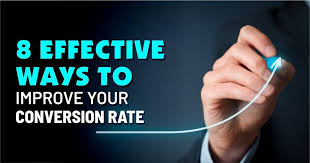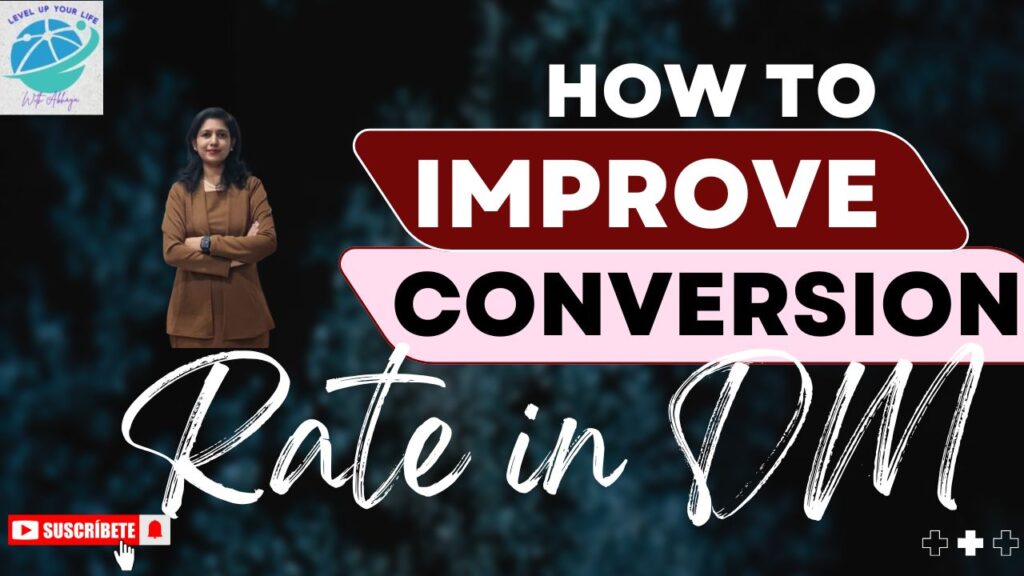
8 Effective Way To Improve Your Conversion Rate
Here is Important Points -How To Improve Conversion Rate And Sales In Digital Marketing:
1. Optimize Website and Landing Pages
- User-Centric Design: Ensure the website is visually appealing, easy to navigate, and mobile-friendly. Simplify the layout to guide users toward conversion points (e.g., “Buy Now,” “Subscribe”).
- Fast Load Times: Optimize images, enable caching, and use Content Delivery Networks (CDNs) to reduce load times. Slow websites can deter potential customers.
- Clear Call-to-Actions (CTAs): Use action-oriented, visible, and compelling CTAs with clear value propositions (e.g., “Get 50% Off Today”).
2. Enhance Content Marketing
- High-Quality Content: Create engaging and valuable content that addresses your audience’s pain points. Use blog posts, videos, infographics, and case studies.
- SEO Optimization: Target relevant keywords, optimize meta tags, and structure content for search engines to drive organic traffic.
- Content Personalization: Use data to personalize recommendations and deliver relevant content to users based on their behavior and preferences.
3. Leverage Email Marketing
- Segment Email Lists: Divide your audience based on demographics, purchase history, and engagement levels to tailor your messages.
- Personalized Emails: Use recipient names and specific recommendations in your email content.
- Automated Campaigns: Implement email workflows for onboarding, abandoned carts, and post-purchase follow-ups.
4. Utilize Social Media and Paid Advertising
- Targeted Ads: Use audience segmentation to target ads based on age, interests, location, and browsing behavior.
- Retargeting Campaigns: Show ads to users who have visited your site but didn’t convert, reminding them of products or services they viewed.
- Engagement Campaigns: Post interactive content like polls, contests, and live sessions to increase engagement and drive traffic.
5. Improve Trust and Credibility
- Social Proof: Display customer reviews, testimonials, and case studies prominently.
- Trust Signals: Include secure payment options, trust badges, and privacy guarantees.
- Refund Policy: Offer a clear and straightforward refund or return policy to reduce customer hesitation.
6. Analyze and Leverage Data
- Track Performance Metrics: Use analytics tools like Google Analytics, heatmaps, and CRM systems to monitor user behavior.
- Conversion Rate Optimization (CRO): Identify where users drop off in the sales funnel and implement strategies to address those issues.
- Customer Feedback: Regularly solicit feedback to identify pain points and areas for improvement.
7. Create a Sense of Urgency
- Limited-Time Offers: Use countdown timers and flash sales to encourage immediate purchases.
- Scarcity Tactics: Highlight low stock levels or limited availability to create urgency.
- Exclusive Deals: Offer discounts or perks exclusively to email subscribers or loyalty members.
8. Focus on Mobile Optimization
- Responsive Design: Ensure all content is optimized for mobile devices.
- Simplified Checkout: Minimize steps in the mobile checkout process and enable options like autofill and mobile wallets.
- SMS Marketing: Use SMS campaigns for reminders, offers, and updates.
9. Invest in Video Marketing
- Product Demonstrations: Showcase how products solve problems through engaging videos.
- Testimonials: Share customer stories through video testimonials.
- Interactive Videos: Incorporate clickable elements in videos to drive traffic directly to product pages.
10. Build Relationships and Retain Customers
- Loyalty Programs: Reward repeat customers with points, discounts, or exclusive access to products.
- Exceptional Customer Support: Provide timely and effective support through live chat, email, or social media.
- Engage After-Sale: Follow up with thank-you emails, feedback requests, or tips on product use.
11. Keep Adapting and Innovating
- Stay Updated: Monitor industry trends, competitor strategies, and changing consumer preferences.
- Experiment: Try new platforms, technologies, and marketing techniques.
- Use AI and Automation: Implement tools for personalized recommendations, chatbots, and data analysis to streamline processes.
By combining these strategies and consistently monitoring their impact, businesses can achieve higher conversion rates and sales in digital marketing.

The Concept Of Funnel For Sales Conversion In Digital Marketing
A sales funnel in digital marketing represents the journey a potential customer goes through from initial awareness of a product or service to making a purchase. It is a model that helps marketers visualize and optimize the customer journey, ensuring a higher conversion rate at each stage. The funnel is typically divided into stages, each designed to nurture leads and guide them toward becoming paying customers.

Stages of the Sales Funnel
- Awareness (Top of the Funnel – TOFU)
- Objective: Attract attention and make people aware of your brand, product, or service.
- Tactics:
- Content marketing (blogs, videos, infographics)
- Social media engagement
- Search engine optimization (SEO)
- Paid ads (Google Ads, Facebook Ads)
- Goal: Drive traffic to your website or landing page.
- Interest (Middle of the Funnel – MOFU)
- Objective: Engage users and build their interest in your offerings by providing valuable information.
- Tactics:
- Email marketing campaigns
- Webinars and workshops
- Downloadable resources (e.g., eBooks, whitepapers)
- Retargeting ads
- Goal: Educate potential customers about your value proposition and encourage them to consider your solution.
- Consideration (Still MOFU)
- Objective: Deepen the relationship with potential customers by addressing their specific needs and concerns.
- Tactics:
- Case studies
- Product demos or free trials
- Customer testimonials and reviews
- Comparison charts
- Goal: Position your product or service as the best choice.
- Decision (Bottom of the Funnel – BOFU)
- Objective: Convert leads into paying customers.
- Tactics:
- Exclusive offers or discounts
- Limited-time promotions
- Simplified and secure checkout processes
- Personalized follow-ups
- Goal: Finalize the purchase and win the customer.
- Retention (Beyond the Funnel)
- Objective: Retain customers and encourage repeat purchases or upselling.
- Tactics:
- Loyalty programs
- Regular email updates with special offers
- Customer support and satisfaction surveys
- Goal: Turn one-time buyers into loyal advocates for your brand.
Key Features of a Sales Funnel
- Visualization: A funnel shape illustrates that not all potential customers will move to the next stage; the number narrows as leads progress.
- Data-Driven Insights: Analytics help identify bottlenecks and optimize each stage of the funnel.
- Customer-Centric: Focuses on meeting the needs and expectations of potential customers at each stage.
- Iterative Process: The funnel can be refined and adjusted over time based on feedback and performance metrics.


